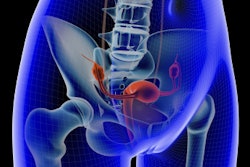
Contrast-enhanced ultrasound (CEUS) has a number of useful benefits over other forms of medical imaging, according to two studies presented Monday at the virtual 2021 American Institute of Ultrasound in Medicine (AIUM) annual meeting.
Researchers from Northwell North Shore and University Hospitals Cleveland Medical Center presented their respective findings on the uses of CEUS in interventional applications and vascular malformations, as well as other overall benefits of contrast ultrasound, such as better efficiency, better imaging, fewer side effects, and no exposure to ionizing radiation for patients.
"Understanding how to perform, interpret, and use CEUS can significantly improve intraprocedural accuracy and postprocedural surveillance of various entities," said Dr. Sarah Raza from the Northwell North Shore Long Island Jewish Medical Center.
Raza's presentation at AIUM 2021 looked at the use of contrast ultrasound in several medical scenarios, such as patients undergoing an endovascular aneurysm repair (EVAR) to detect the presence of endoleaks after interventional procedures.
In a retrospective study of 74 patients, Raza's team examined the use of a commercially available contrast agent (Lumason, Bracco Diagnostics) in comparison to color Doppler performed on patients post-EVAR. Thirty-two patients received CEUS and 42 underwent color Doppler. Ultrasound results on all patients were compared with CT angiography (CTA) and digital subtraction angiography (DSA).
Contrast ultrasound proved superior to color Doppler in all categories.
| Contrast ultrasound vs. color Doppler after EVAR | ||
| Color Doppler ultrasound | Contrast-enhanced ultrasound | |
| Percent of patients diagnosed with endoleak | 57% | 67% |
| Sensitivity | 61% | 100% |
| Specificity | 80% | 100% |
| Accuracy | 66% | 100% |
Contrast ultrasound detected the source of the endoleak in all cases, compared with 46% of cases with CTA.
"Overall, CEUS is very good at [identifying] endoleaks compared with CTA" and color Doppler, Raza said.
In a second AIUM presentation on Monday, Dr. James Guirguis from University Hospitals Cleveland Medical Center talked about a 40-year-old woman in 2017 who was admitted for a left molar mass that had been bothersome for more than 30 years. A year later, there was concern for recurrence and an MRI scan was performed that showed a left nasal ala vascular malformation.
Subsequently, interventional radiology was consulted for possible sclerotherapy. Ultrasound was used to assess the lesion, then contrast ultrasound was used for successful sclerotherapy of the malformation.
One month later, the lymphatic malformation showed near-complete resolution. The patient reported significant cosmetic improvement of the treated area, as well as improvement in headaches and facial pain.
"Patients don't have to lie in an MRI for extended periods of time, and no labs are required prior to scanning," Guirguis said. "The examinations are relatively quick and [CEUS] can accurately assess organs that cannot be well-assessed on CT or MRI. It's also relatively more affordable than CT or MRI."
However, contrast ultrasound has its limitations. While CEUS uses micro or nanobubbles to assess a variety of organs in real-time, they can only focus on one area of the body at a time, whereas CT and MRI can scan larger portions of the body.
Air overlying the body part of interest, such as bowel gas in the abdomen, can also obscure imaging, and imaging of obese patients may be more difficult, Guirguis said.




















